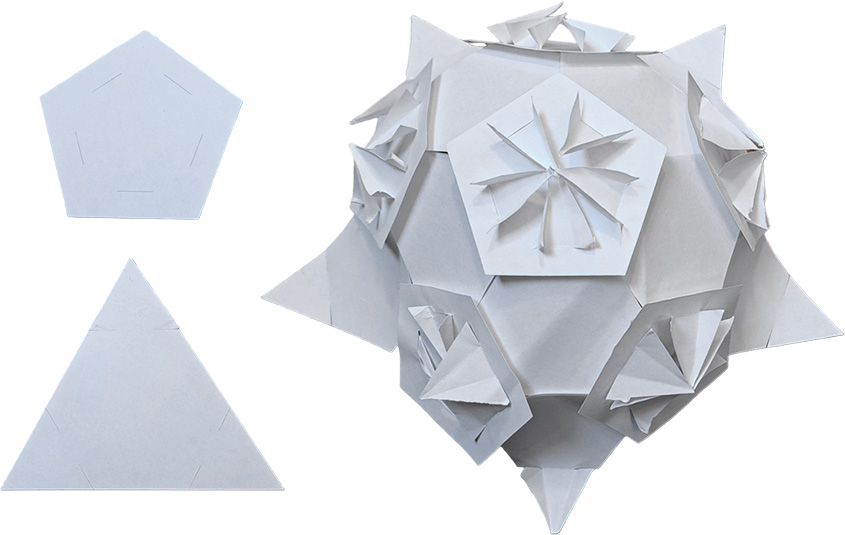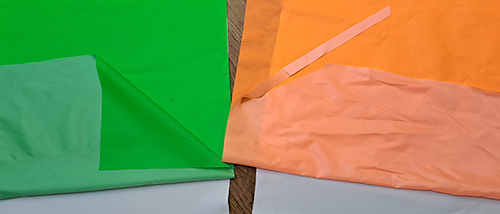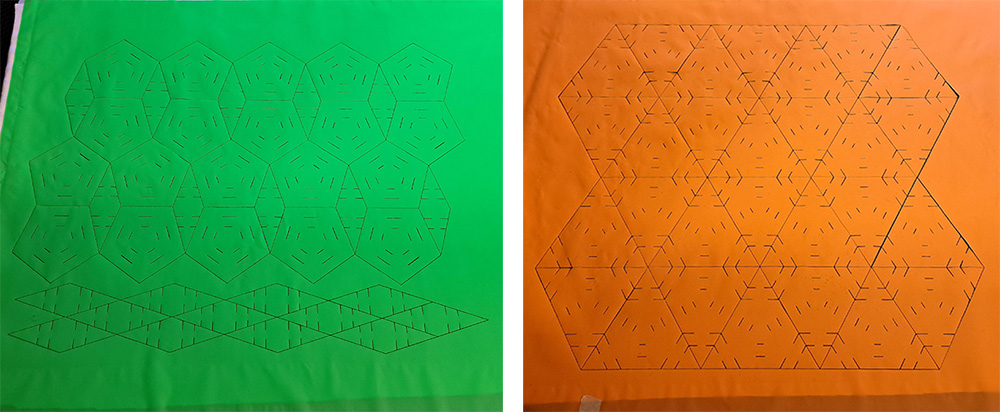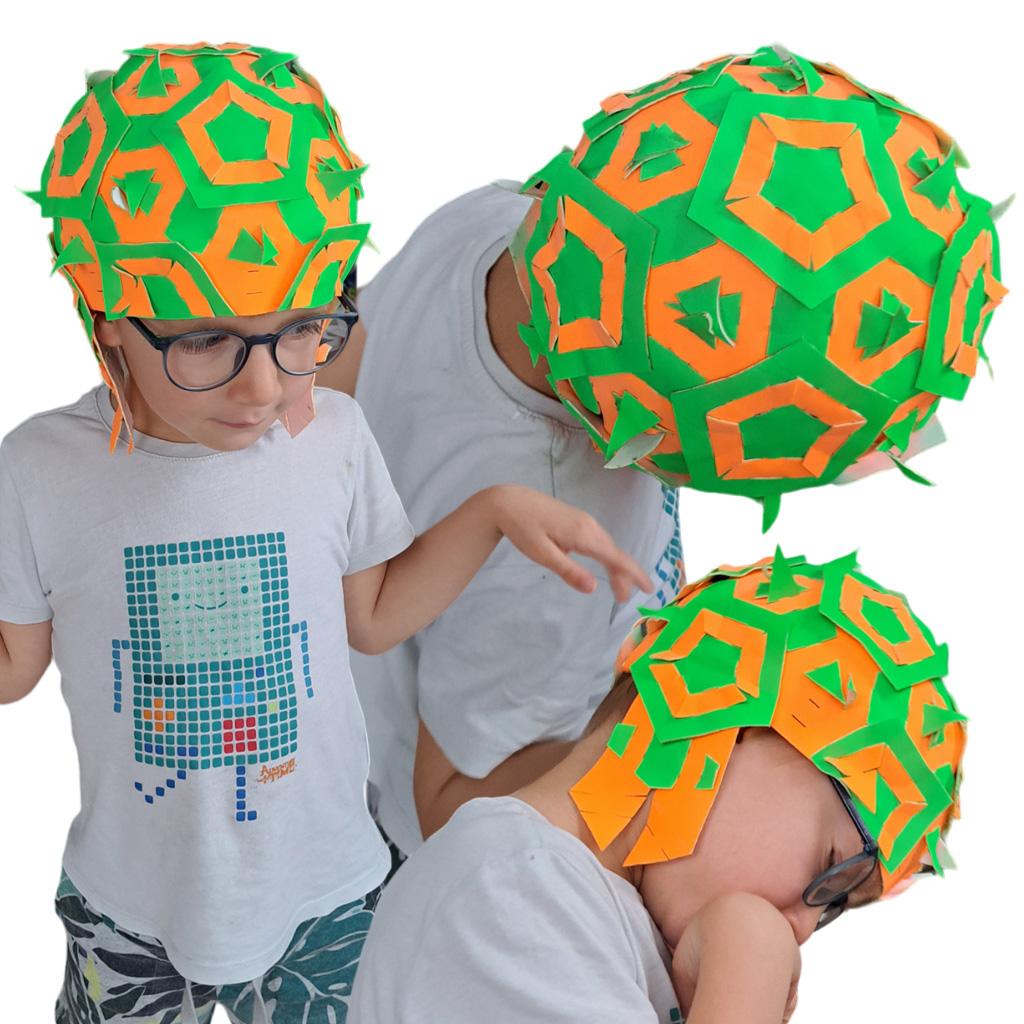3. Circular Open Source Fashion¶
Research & Ideation¶
This week was my first ever introduction to fabrics. Apart from very simple cloth's mending, I had never touched fabrics before. I have fiddled with crochet and weaving though.
I started with the idea of working with headwear. To achieve the shape of the headwear and to make things simpler for myself and this introduction less hassle-free, I chose to work with a known geometry to me, an icosahedron (a polyhedron with 20 identical equilateral triangles). I truncated the icosahedron thus achieved a truncated icosahedron. Truncation in geometry is "an operation in any dimension that cuts polytope vertices, creating a new facet in place of each vertex" (wiki). Truncation of icosaheron yields to pentagonal faces at the vertices. Truncated icosahedron is also the form of footballs.
The reflective helmet is a modular helmet you can assemble and disassemble with various colors and combinations in various sizes. It is designed to be worn as a lightweight light-reflecting garment to make yourself more visible at night. The plug-and-play idea and colorful playfulness make it attractive for kids.
The project is also available on oscircularfashion. I invite you to look at other inspiring projects on the site.
References & Inspiration¶
Abstract geometry, material perfomance and making process are, to me, the fundamentals of design. Therefore, since my first year in architecture school I have been trying to understand geometry. Later on, this turned into teaching about geometry.
This is how I usually feel when I think about designing. All the sources inspiration, the materials, the crafts, the tools and also the abstract notions of forms create a jumbled mess at the beginning of a design process. I get frustrated but I also get immense pleasure from putting each piece of the puzzle in its place.
Euclidean Geometry is the first step in understanding plane and solid geometries as well as how to manipulate and work with them. It also forms the basis of CAD modeling along with Cartesian Geometry. The postulates of Euclid makes drawing with a straightedge (ruler) and a compass possible. Euclid also wrote Elements (see also), the most influential book in mathematics. one of the chapters of the book is dedicated to Platonic solids (regular polyhedras). The straightedge and compass method has been used profusely by craftmen and artisans in Islamic Architecture.

Tools¶
3D modeling
- Rhinoceros
Prototyping with paper
- Cricut Maker 3 with Cricut Design Space software (a howto can be found on my documentation)
Making composite fabric
- Vevor 8-in-1 Heat Press (a howto can be found on my documentation)
Laser cutting
- BRM 1612 laser cutter with Lightburn software (a brief tutorial below)
Process and workflow¶
Modeling in Rhinoceros and prototyping with paper model¶
I modeled the basic regular icosahedron with triangular faces in Rhinoceros. Divided each edge to 5 parts. Connected the third point along each edge around each vertex. This created pentagonal surfaces and this is how you can achieve trunctation. Later, I extended the pentagonal surfaces so that they overlap with the triangular surfaces so that they can weave into each other.

I layed out the two types of modules with creating appropriate slits to weave into each other and cut some pieces in Cricut Maker 3 and put them together.

Design and material iterations¶
Looking at the paper model, I realized the two things that I need to change with my design:
- Single entry between modules did not provide enough grip and it was easy to dismantle them. So I introduced two slits for every connection, having a more woven kind of relationship between pieces.
- Triangular modules can create a seamless pattern, meaning that there are no overlaps or gaps when they tile a 2D surface. However, pentagonal modules create gaps in the shape of rhombi inbetween them. I wanted to make use of this gap and introduced a third rhombus module.
Meanwhile I started material explorations. The aim was to create a helmet, therefore I picked a reflective polyester so that the helmet would be visible at night too. I realized that reflective polyester alone does not have enough body to hold the shape of the helmet on its own.

I moved on to trying several options to have more body and thickness to the material. I tried layering the reflective polyester with a fabric with adhesive backing (on the left) and with a thick lycra (fused together with fusing fabric) (on the right) with heat press machine. The former was still too flimsy. The latter had enough hold but the blue lycra created a dull look.

Finally, I decided on white lycra layering underneath the reflective polyester. The pieces held well together and the helmet looked bright.


The Final Design Files¶
You can find the fabrication files here1, here2 and here3:

Assembly¶
The Final Look¶

Notes from the classroom¶
notes from the classroom
Zoe Romano's lecture
- Circular economy, 2d design
- Robots to fold garments
- Earth Logic: Fashion Action Research Plan (Kate Flethcer & Mathilda Tham) - book
- Total Ethics Fashion (Emma Hakansson) - book
- Circles of Sustainability
- The Sustainable Fashion Communication Playbook (UN Environment Programme) - book
- Openness
- Open Design Now - book
- Open Structures modular, think small
- Openness as a competitive advantage share global, manufacture local
- Zero Waste Fashion Design (Timo Rissanen & Holly Mcquillan) - book
Modular Fashion
- Vector graphics, 2d design, lasercut technology
- Interlocking to create complex 3d seamless geometries
- Zero waste, modular fashion, tessellation, interlocking, participation
- It is really important to experiment in order to test the geometry, the weight of the material, etc.
- Examples with felt of 2-3 mm thickness: Takehiro Ando (Cuma, Cross), Kosuke Tsumura, Berber Soepboer, Nasia Burnet, Galya Rosenfeld
- Examples with variation: Matija Cop, Eunsuk Hur
- Examples from Fabricademy: Emilia Pucci (Celosias), Al-zahraa Alomari (Triangle)
- Materials: paper/cardboard, felt, leather, neoprene (be careful with laser cutting original neoprene as it contains chlorine. You can use scuba knit instead), recycled jeans, eco leather (be careful, should not contain pvc?), recycled leather, thick wool/acrylic
- Nesting: svgnest, deepnest.io
- oscircularfashion.com
Fabrication files¶
-
File: Laser cut sheet color A ↩
-
File: Laser cut sheet color B ↩

